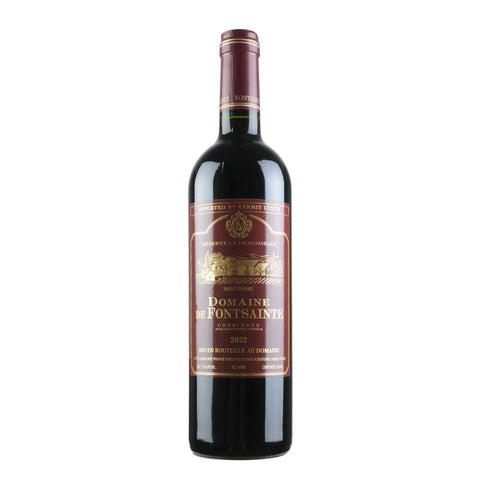Red wine production begins with selecting grape varieties, such as Cabernet Sauvignon, Pinot Noir, Merlot, and Syrah. The critical stages in winemaking include harvesting, crushing, destemming, fermentation, pressing, aging, and bottling.
- Harvesting: Timing is crucial. Grapes must be picked at optimal ripeness to achieve the desired balance of sugars, acids, and tannins.
- Crushing and Destemming: Grapes are crushed to release their juice and destemmed to remove the stems, which can impart bitter flavors.
- Fermentation: The crushed grape mixture (must) ferments, with yeast converting sugars into alcohol and carbon dioxide. For red wines, fermentation typically occurs with the grape skins to extract color, flavor, and tannins.
- Pressing: Post-fermentation, the wine is pressed to separate the liquid from the solid grape skins and seeds.
- Aging: Red wines may age in stainless steel tanks, concrete vats, or oak barrels, influencing their flavor and texture.
- Bottling: After aging, wines are clarified, stabilized, and bottled.
Types of Red Wine Grapes
There are numerous red wine grape varieties, each contributing unique flavors and characteristics to the wine. Some of the most common red wine grapes include:
- Cabernet Sauvignon: Known for its bold flavors of blackcurrant, cassis, and blackberry, this grape is a staple in Bordeaux blends and is widely planted in regions like Napa Valley and Australia.
- Merlot: Offering softer, more plush textures compared to Cabernet Sauvignon, Merlot features flavors of red plums, dark berries, and vanilla. It is a key component in Bordeaux blends, particularly from the Right Bank.
- Pinot Noir: Renowned for its elegance and complexity, Pinot Noir is characterized by bright red berry and cherry notes with subtle hints of earth and spice. It thrives in Burgundy, Oregon, and some California areas, such as Santa Rita Hills.
- Syrah/Shiraz: This grape is known for its robust flavors of brambly berries, black olives, pepper, and cured meat. It is a major player in the Rhône Valley and performs well in regions like Australia and the United States.
Flavors and Aromas
Various factors influence red wine's flavors and aromas, including grape variety, climate, and winemaking techniques. The primary fruit flavors, such as blackberry, cherry, and plum, are typically the first to be noticed. As the wine ages, secondary aromas, including vanilla, tobacco, and cedar, develop. Tertiary flavors, such as leather, earth, and truffle, emerge over extended aging periods, adding complexity and depth to the wine.
Light-Bodied Red Wines
Light-bodied red wines, like Pinot Noir and Gamay, are known for their delicate flavors and lower tannin levels. They often undergo shorter maceration periods (time spent with skins) and are fermented at cooler temperatures to preserve their fruity and floral notes. Minimal oak aging is typical to maintain freshness.
- Example: Beaujolais Nouveau, made from Gamay grapes, is typically enjoyed young and fresh, highlighting its vibrant fruitiness and low tannin content.
Full-Bodied Red Wines
Full-bodied red wines, such as Cabernet Sauvignon and Syrah, are characterized by their rich, robust flavors and higher tannin levels. These wines benefit from more extended maceration periods and fermentation at higher temperatures to extract more tannins and color. Aging in new oak barrels enhances complexity and imparts flavors of vanilla, spice, and smoke.
- Example: Napa Valley Cabernet Sauvignon is renowned for its deep color, intense flavors, and aging potential, often spending 18-24 months in oak barrels.
Age-Worthy Red Wines
Age-worthy red wines are crafted to develop and improve over time. They usually have high tannin and acid levels, providing the structure needed for long-term aging. Bordeaux blends and Barolo are classic examples, often aged in oak before extended bottle aging.
- Example: Barolo, made from Nebbiolo grapes, is known for its robust tannins and high acidity, allowing it to evolve over decades.
Young and Fresh Red Wines
These wines are designed to be consumed shortly after release, emphasizing fruit-forward flavors and minimal tannins. They undergo short maceration periods and are often aged in stainless steel to preserve their bright, fresh character.
- Example: Valpolicella Classico, made from Corvina, Rondinella, and Molinara grapes, is typically light, fruity, and meant to be enjoyed young.
Sparkling Red Wines
Sparkling red wines undergo a second fermentation to create bubbles. This can occur through the traditional method (in-bottle fermentation), the Ancestral method (Pét-Nat), or Charmat (in-tank fermentation).
- Example: Lambrusco, an Italian sparkling red, is known for its effervescence and fruity, slightly sweet profile, achieved through the Charmat method.
Still Red Wines
Still red wines do not undergo secondary fermentation and retain their natural stillness. They can range from light to full-bodied, covering a broad spectrum of flavor profiles.
Conventional vs. Natural Winemaking
Conventional winemaking often involves various interventions to control the winemaking process and ensure consistency and stability. Common practices include:
- Additives: Use of commercial yeasts, sulfites, and other additives to control fermentation and preserve the wine.
- Fining and Filtering: Techniques to clarify the wine and remove unwanted particles.
- Technological Intervention: Equipment and techniques to stabilize the wine, such as temperature control, reverse osmosis, and micro-oxygenation.
Natural winemaking emphasizes minimal intervention and aims to produce wines that reflect their terroir. Key principles include:
- Organic or Biodynamic Farming: Grapes are grown without synthetic chemicals, often with biodynamic practices tied to lunar cycles.
- Native Yeasts: Fermentation is carried out by wild yeasts on the grapes and winery.
- Minimal Additives: Limited use of sulfites and avoidance of other additives.
- Traditional Techniques: Practices such as foot-treading, use of amphorae, and minimal filtration to retain the wine's natural character.
- Example: Domaine Lapierre Morgon, a natural wine from Beaujolais, is made with organically grown Gamay grapes, fermented with native yeasts, and bottled with minimal sulfites.




















































